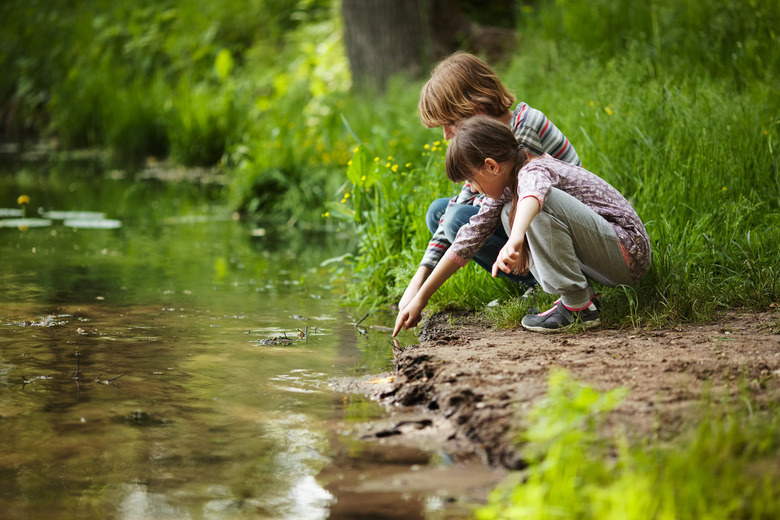Lentic & Lotic Ecosystems
Lentic ecosystem (also called the lacustrine ecosystem or the still water ecosystem) and lotic ecosystem (also called the riverine ecosystem) are two types of water ecosystems, the first dealing with still water ecosystems and the second dealing with flowing water ecosystems. Together, they are the two ecosystems that make up the study of freshwater ecology, also known as aquatic ecology.
Lentic Features
Lentic Features
A lentic ecosystem entails a body of standing water, ranging from ditches, seeps, ponds, seasonal pools, basin marshes and lakes. Deeper waters, such as lakes, may have layers of ecosystems, influenced by light. Ponds, due to their having more light penetration, are able to support a diverse range of water plants.
Lotic Features
Lotic Features
A lotic ecosystem can be any kind of moving water, such as a run, creek, brook, river, spring, channel or stream. The water in a lotic ecosystem, from source to mouth, must have atmospheric gases, turbidity, longitudinal temperature gradation and material dissolved in it.
Lotic ecosystems have two main zones, rapids and pools. Rapids are the areas where the water is fast enough to keep the bottom clear of materials, while pools are deeper areas of water where the currents are slower and silt builds up.
Considerations
Considerations
Like any ecosystems, lentic and lotic ecosystems can be destroyed through natural or human interaction. Lentic and lotic systems may succumb to such things as climate change, being dammed, drained, filled or undergo an invasive species invasion.
Cite This Article
MLA
Reinbold, Joan. "Lentic & Lotic Ecosystems" sciencing.com, https://www.sciencing.com/lentic-lotic-ecosystems-7355077/. 13 March 2018.
APA
Reinbold, Joan. (2018, March 13). Lentic & Lotic Ecosystems. sciencing.com. Retrieved from https://www.sciencing.com/lentic-lotic-ecosystems-7355077/
Chicago
Reinbold, Joan. Lentic & Lotic Ecosystems last modified August 30, 2022. https://www.sciencing.com/lentic-lotic-ecosystems-7355077/
